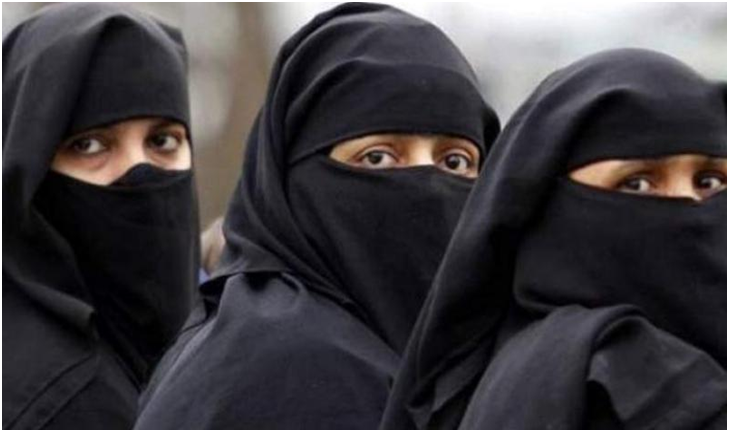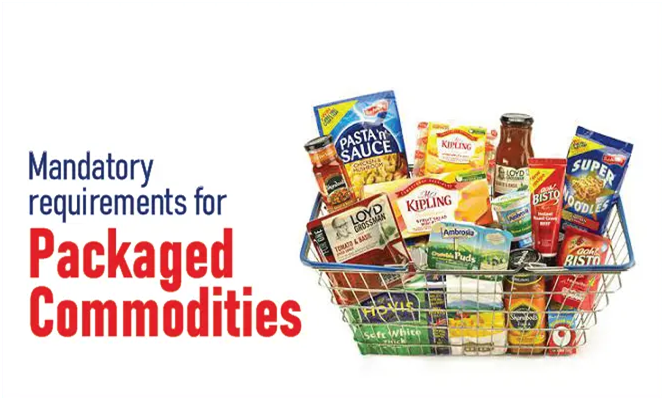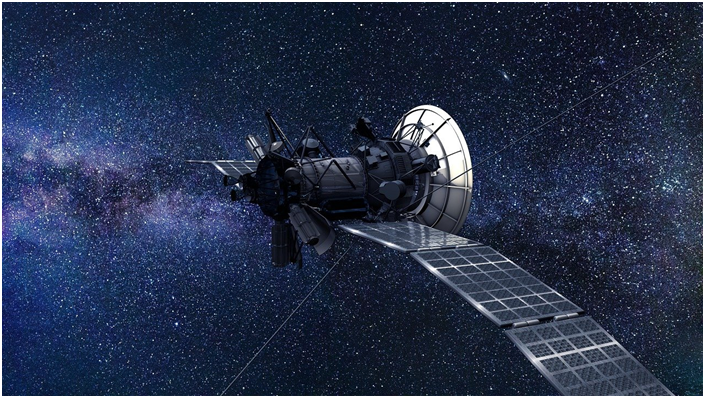Judicial recourse by Muslim women in India (GS Paper 1, Social Issue)

Context:
- A Talaq-e-Hasan petition filed by a Ghaziabad-based woman, seeking to make the divorce pronounced by the husband at an interval of at least a month extra-judicial, was in the limelight recently.
- The Bench of the Supreme Court of India observed that the practice of Talaq-e-Hasan or divorce pronounced to the wife once a month for three months is “not so improper”.
The Bench also brought to the counsel’s notice the possibility of exploring divorce through mubarat or mutual consent. The judges referred to the option of khula, or a Muslim woman’s right to divorce as well.
Demand of Rights by Muslim Women:
- The Court’s observation continues the trend of the judiciary taking into cognisance the rights available to a Muslim couple to dissolve an unhappy marital union.
- It also marks the increasing propensity of Muslim women to stand up for their rights in marriage or otherwise, a clear departure from times when women left the husband’s house in silence, battered, bruised and fearing social opprobrium.
- Indeed, more and more Muslim women are now approaching various courts, including DarulQaza or shariah courts, for redress of marital grievances.
Greater awareness:
- While the widely-acclaimed invalidation of instant triple talaq by a five-judge Bench of the Court, in 2017, is well documented, there was a Kerala High Court judgment of 2021 which upheld the validity of khula. The court called khula, “the form of divorce conferred upon the wife similar to talaq conferred upon the husband”.
- Incidentally, there are more cases of khula in DarulQazas or shariah courts than those of instant triple talaq, post the 2017 verdict, according to a rough estimate.
- In other words, greater awareness of their rights is seeing more and more Muslim women walking out of an abusive marriage, even opting for khula.
Issue of hijab:
- While much has been happening in the judicial fora when it comes to Muslim women’s rights, a silent churning is also going on within the Muslim community in India.
- Take for instance, the issue of the hijab. While many women stood up to be counted, arguing forcefully their right to wear what their faith ordains, and quoted verses from Surah Ahzaab of the Koran, many also pointed out the rights granted under the Constitution of India to the minorities to protect their religion, language and culture.
- It was the new-found confidence of Muslim women to quote from the religious book and also speak up for the rights of a citizen enshrined in the Constitution.
- Some girls pointed out that it is not just women who have to observe purdah in Islam.
- The men too have their own limited purdah, a mode of compulsory dressing from the navel to the knees that they are not allowed to violate. Again, they quoted verses 30-31 of Surah Nur of the Koran to buttress their contention.
Raising voice for varied issues:
- Interestingly, at a much lower profile, Muslim women have also been asserting their right to enter mosques to pray.In the past, mosques were considered a men-only zone. Now, women want their sacred space.
- It started with a petition in the Haji Ali Dargah case in 2016, where women won the right to enter the dargah’s sanctum sanctorum. This kind of a silent assertion of their rights is unprecedented.
- For instance, during the height of the Babri Masjid protests in the late 1980s and early 1990s, it was almost invariably the Muslim men who took out rallies and spoke in public.
- In the Shah Bano case too, where the women actually stood to gain, there was very little affirmative response from Muslim women.
- Recent years have seen change to the extent that in December 2019 when the Citizenship (Amendment) Act (CAA) was passed, it was not the traditional Muslim leadership that hit the streets but the women of the community.
- Even as pro-CAA noises emanated from Jama Masjid’s Imam Bukhari and the chief of the Ajmer Dargah, Muslim women took the Government, the media and the men by surprise too by assuming leadership of a long-drawn out struggle against the CAA.
Challenges:
- Even as women assert their right to end a marriage through khula, some clerics still insist on the man’s consent, thereby defeating the very purpose of khula. On the same lines, even as cases against nikahhalala are pending before the Supreme Court for over three years, some maulanas still tend to misuse the provision for halala.
- Whereas the Koran allows two divorces, considering them revocable, and the third one is considered final, some clerics tend to circumvent it through a distortion of the provision of halala.
- Many maulanas still consider a divorce pronounced in haste as final, and tell the victim to marry another man, consummate the marriage, and obtain divorce in order to return to her first husband after iddah or waiting period.
Conclusion:
- Muslim women are taking on such practices too in the Supreme Court. The quiet churning within the Muslim community could well herald the winds of change.
The mandatory requirements for packaged commodities
(GS Paper 3, Economy)
Why in news?
- Recently, the Department of Consumer Affairs, Legal Metrology Division has notified a draft amendment to the Legal Metrology (Packaged Commodities) Rules 2011.
- The Department of Consumer Affairs Legal Metrology Division has observed that many manufacturers/packagers/importers do not clearly label necessary declarations or prime constituents on the front of packaged commodities, which are deemed essential to be disclosed in order to protect consumer interests.
What are the mandatory provisions under the Legal Metrology (Packaged Commodities) Rules, 2011?
- It is mandatory under the Legal Metrology (Packaged Commodities) Rules, 2011 to ensure a number of declarations, such as the name and address of the manufacturer/packer/importer,the country of origin, the common or generic name of the commodity, the net quantity, the month and year of manufacture, the Maximum Retail Price (MRP) and consumer care information. As a consumer-oriented policy, all prepackaged commodities should also be inspected.
- As stated in Rule 2(h), the “principal display panel”, in relation to a package, means the total surface area of a package containing the information required in accordance with these rules, namely that all the information should be grouped together and given in one place — the pre-printed information could be grouped together and given in one place and the online information in another place.
- Additionally, Rule 9(1)(a) provides that the declaration on the package must be legible and prominent. The consumers’ ‘right to be informed’ is violated when important declarations are not prominently displayed on the package.
If there is more than one major product, Rule 6(1)(b) states that “......the name or number of each product shall be mentioned on the package.” This sub-rule is however, not applicable to mechanical or electrical commodities.

What are the proposed amendments?
- As many blended food and cosmetic products are sold on the market, the key constituents need to be mentioned on the product packaging. It is common for consumers to assume that brands’ claims are accurate, but such claims are usually misleading.
Unique Selling Proposition (USP):
- Additionally, the front side of the package must contain the percentage of the composition of the unique selling proposition (USP). As the name suggests, a USP also known as a unique selling point, is a marketing strategy designed to inform customers about the superiority of one’s own brand or product.
- Listing the USP of a product on the front of the package without disclosing its composition percentage violates consumer rights.
- Also, packages displaying key constituents must display a percentage of the content used to make the product. For example, if a brand sells aloe veramoisturiser or almond milk/biscuits, then the maximum percentage of the product should be aloe vera and almond, otherwise, the product name is misleading.
Mandatory components:
- The Department of Consumer Affairs, Legal Metrology Division has suggested that at least two prime components should be declared on the package’s front side along with the brand name. Currently, manufacturers list the ingredients and nutritional information only on the back of the packaging.
- The proposed Section 6(1)(ba) states that when a commodity contains more than one constituent, the front side of the package must include a declaration of two or more of the commodities’ prime constituents along with the brand name.
- This declaration must also include the percentage/quantity of the USPs of the product in the same font size as the declaration of the USPs. However, mechanical or electrical commodities are excluded from this sub-rule.
Way Forward:
- Moreover, public comments were solicited from all stakeholders, including industries, associations, consumers, and voluntary consumer organisations, in order to obtain their viewpoints.
- When the new provision of Section 6(1) (ba) is added, consumers will not be misled by the fake claims of manufacturers relating to the content in blended foods and cosmetics.
Europe unveils hi-tech MTG-I1 satellite
(GS Paper 3, Science and Tech)
Why in news?
- Recently, Europe has unveiled the first of a 4 billion euro ($4 billion) family of satellites designed to give earlier warning of extreme weather that has been causing havoc across the globe in 2022.
Salient features:
- The 3.8-tonne spacecraft will beam back images from next year and will be joined in geostationary orbit by three more MTG-I imaging satellites and two MTG-S "sounding" satellites capable of slicing the atmosphere, much like a medical scanner, by 2030.
- The hope is that forecasters will gain precious hours in predicting near-term storms and floods that can cost lives.
Also scanning the atmosphere will provide a better picture of current conditions to feed into their computerised models.

Significance:
- The initiative highlights a race to grapple with weather disruption exacerbated by global warming and which is estimated to have cost $100 billion worldwide in 2021 alone.
- While the MTG-I imaging satellites will bring Europe roughly in line with GOES-R operated by NASA and the National Oceanic and Atmospheric Administration, albeit with a newer lightning mapper, MTG-I1 will deploy sounders in space for the first time.
- China has experimented with the technology with lower accuracy but is yet to deploy it, while acknowledging China’s space programme is developing fast.
- The sounding or scanning technique will capture storms before they become visible on traditional radar.
Way Forward:
- The result of 12 years of development for the European Space Agency and 30-nation EUMETSAT, the MTG-I1 satellitewill be launched by the end of 2022 on an Ariane 5 rocket and put sharper eyes in space over Europe and Africa.
‘Pradhan Mantri TB Mukt Bharat Abhiyaan’ to eliminate TB by 2025
(GS Paper 2, Health)
Why in news?
- Recently, the President of India, launched the Pradhan Mantri TB Mukt Bharat Abhiyaan.
- It reiterated India’s commitment to eliminate the high-burden infectious disease by 2025, five years ahead of the global goal of 2030.
This vision was first articulated by the Prime Minister at the Delhi End TB Summit in March 2018.

NikshayMitra initiative:
- The President also launched the NikshayMitra initiative to ensure additional diagnostic, nutritional, and vocational support to those on TB treatment, and encouraged elected representatives, corporates, NGOs, and individuals to come forward as donors to help the patients complete their journey towards recovery.
- Individuals, non-profits, institutions and corporations can now “adopt” tuberculosis (TB) patients to support their nutritional needs, additional diagnostics and vocational training.
- The Ni-kshay 2.0 portal will facilitate in providing additional patient support to improve treatment outcome of TB patients, augmenting community involvement in meeting India’s commitment to end TB by 2025 and leveraging Corporate Social Responsibility (CSR) opportunities.
About National Tuberculosis Elimination Programme (NTEP):
- The National Tuberculosis Elimination Programme (NTEP), previously known as Revised National Tuberculosis Control Programme (RNTCP), aims to strategically reduce TB burden in India by 2025, five years ahead of the Sustainable Development Goals.
- In 2020, the RNTCP was renamed as the National TB Elimination Program (NTEP) to emphasize the aim of the Government of India to eliminate TB in India by 2025.
- It reached over a billion people in 632 districts/reporting units and is responsible for carrying out the Government of India’s five-year National Strategic Plans for TB elimination along with the States/UTs.
The National Strategic Plan for TB Elimination:
- The National Strategic Plan for TB Elimination was launched to achieve the target of ending TB by 2025 in a mission mode.
- It is a multi-pronged approach which aims to detect all TB patients with an emphasis on reaching TB patients seeking care from private providers and undiagnosed TB in high-risk populations.
- In 2021, India notified 21 lakh TB cases, successfully bridging the gaps between estimated number of cases and those that were recorded on the Ni-kshay portal previously.
- A range of forward-looking policies have been implemented including critical schemes such as Ni-kshay PoshanYojana (NPY), which helped meet the nutritional requirements of TB patients, especially the underserved.
- From 2018 till present, around ₹1,707 crore has been disbursed to more than 65 lakh people on TB treatment across the country.
Other initiatives:
- As part of engaging the private sector, Patient Provider Support Agencies (PPSA) have been rolled out across 250 districts through the domestic setup and JEET initiative, leading to 32% of all TB patients being notified from the private sector.
- Building on Universal Drug Susceptibility Testing (UDST) for all diagnosed TB cases the programme has added 3,760 NAAT machines across the country till 2021 ensuring that patients are diagnosed with drug-resistant TB at the very outset and are put on correct treatment plans on a timely basis.
- Over 1,50,000 Ayushman Bharat - Health and Wellness Centres will be established by December 2022 to decentralize comprehensive primary healthcare including TB care services at the grassroots level.
- The programme also initiated strategies to engage the community and create a Jan Andolan against TB. The program has identified more than 12,000 TB champions to reach out to the underserved and marginalized and support patients in accessing care.
- The programme is also supporting creation of Patient Support Groups (PSGs) to facilitate conversations between patients, doctors and their caregivers to address common issues in treatment.
Way Forward:
A 360-degree approach is the cornerstone of TB elimination in India and a societal approach that brings together people from all backgrounds into a Jan Andolan is needed to achieve the ambitious target of eliminating TB by 2025.





